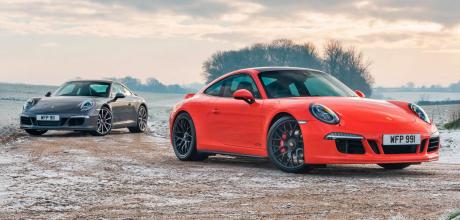Porsche 911 Carrera GTS 991.1 vs. 911 Carrera S 991.1
In the orange corner, a 991 Carrera GTS. In the grey corner, a 991 Carrera S. The difference in performance? The splitting of hairs. In price? £30,000. A no-brainer? If only it were that simple...
Words Steve Bennett
Photography Dan Sherwood
THE £30,000 QUESTION
Pitting the 991 GTS against the Carrera S.
Though often far removed from the confusing world of algebra, arithmetic and geometry many of us struggled to wrap our heads around in school, an innate ability to use man maths when weighing up financial decisions seems to be hard-wired into every male-born being. The phenomenon is used in all areas of life, but perhaps none more so than when debating the viability of a new motoring purchase. A perfect example of this mathematical anomaly in action is where a car — or often an additional car — is bought, with the very real intent of either saving or making money. To a petrolhead’s significant other, this scenario can seem borderline insane, but looked through the lens of man maths, all becomes crystal clear and utterly infallible. This was the very situation I found myself in when handing over the money to purchase my very first Porsche a few months ago.
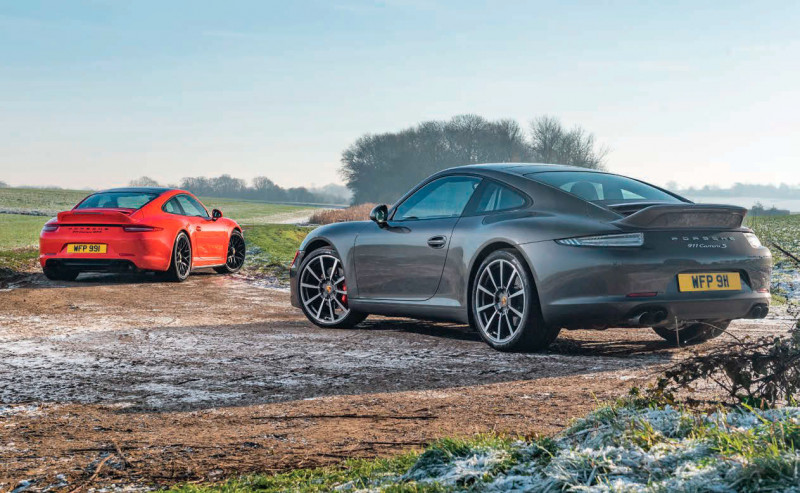
My favourite sort of job? Spending someone else’s money, fictional or otherwise. Even better when I’m being asked to choose between Porsches of the 991 variety. Welcome, then, to a bit of not-so-secret shopping. It’s not hush-hush, largely because we’re at independent Porsche sales specialist, William Francis, in rural Suffolk, where company boss, Charlie Wildridge, has invited us to debate the pros and cons of this modern 911 duo, though not before he talks to us about his plans for dragstrip domination in an Audi V6 Turbo-powered 996. Rest assured we’ll return to this bonkers build in a future issue of 911 & Porsche World.
THE £30,000 DIFFERENCE HAS EITHER BEEN WISELY SPENT OR CLEVERLY SAVED, DEPENDING ON WHICH WAY YOU SQUINT AT IT
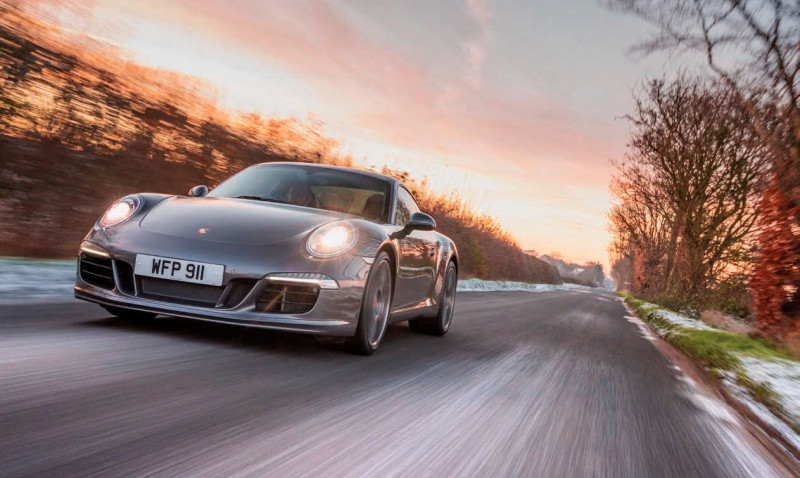
To the pair of 911s, then. What exactly do we have here? Both are first-generation 991s, one being a 2012 Carrera S finished in Agate Grey, the other a 2015 Carrera GTS wearing Lava Orange. That’s the meat and two veg of this contest, but there are, of course, subtleties, caveats and the not so small matter of thirty grand, the figure separating the two Porsches in asking price. How so? Well, the blindingly obvious is the fact one of our 991 protagonists is a more desirable GTS, the product of one of Porsche’s more successful marketing meetings, where the resulting 911 was actually rather more than the sum of its parts.

There’s clearly not much (Agate) grey area in this distinction. What is, perhaps, harder to quantify is the relative values and driving experience compared to specification, mileage and performance. Getting it all on the table, Charlie’s GTS weighs in at £85,595, while his S is offered at a rather more finance-friendly £55,595. GTS versus S battle aside, the former has just 10,500 miles on the clock, while the S has covered 60,000 miles. There you go, case closed. Well, not quite. You see, apart from anything else, this is one very well specified S. Very close, in fact, to the GTS. We’ll disclose the detail shortly, but first, let’s take a look at what makes the GTS so special.
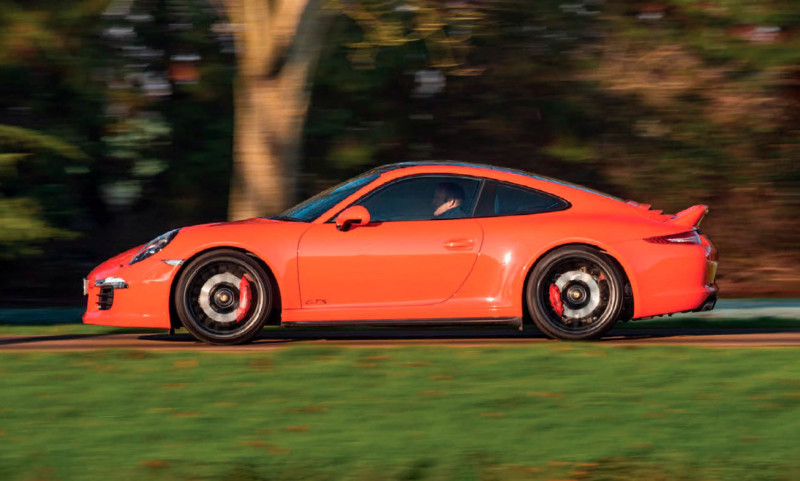
GTS stands for Gran Turismo Sport. It’s a popular acronym for Porsche drivers, with a GTS now in almost every model series. The 904 Carrera GTS was the first Porsche with the three letters in its name. Ferdinand ‘Butzi’ Alexander Porsche designed the mid-engine coupé for both road and racetrack, in line with the maxim “every Porsche is suited to racing”. The two-seater was unveiled at the Solitude track in Stuttgart on 26th November 1963. It was the first sports car from Zuffenhausen to have a plastic body. A scant 106 units were built. The model recorded its greatest victory when driven by Baron Antonio Pucci and Colin Davis at the 1964 Targa Florio road race on the island of Sicily.
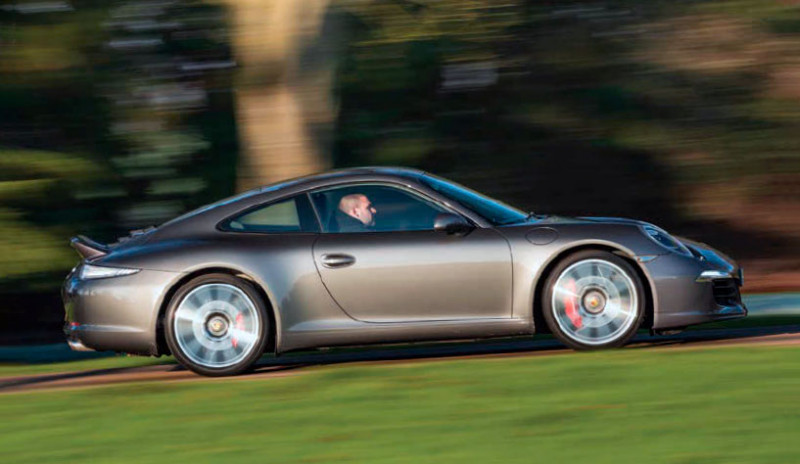
With the Carrera models from the 924 series, Porsche proved the transaxle concept could be successful in motorsport. June 1980 saw the launch of the 207bhp 924 Carrera GT (Type 937), further developed and homologated for Group 4 competition work. Even more powerful, however, was the 924 Carrera GTS (Type 939). With a price of DM110,000, it became instantly famous for being the most expensive production Porsche manufactured. The GTS delivered 238bhp, though a Clubsport variant boasted 271bhp. The GTR, which was designed exclusively for racing, produced a hefty 370bhp.
The total number of units built remained small — between February and April of 1981, fifty left-hand drive examples of the 924 Carrera GTS were built, each painted exclusively in Guards Red. Including all prototypes, fifty-nine cars were produced.
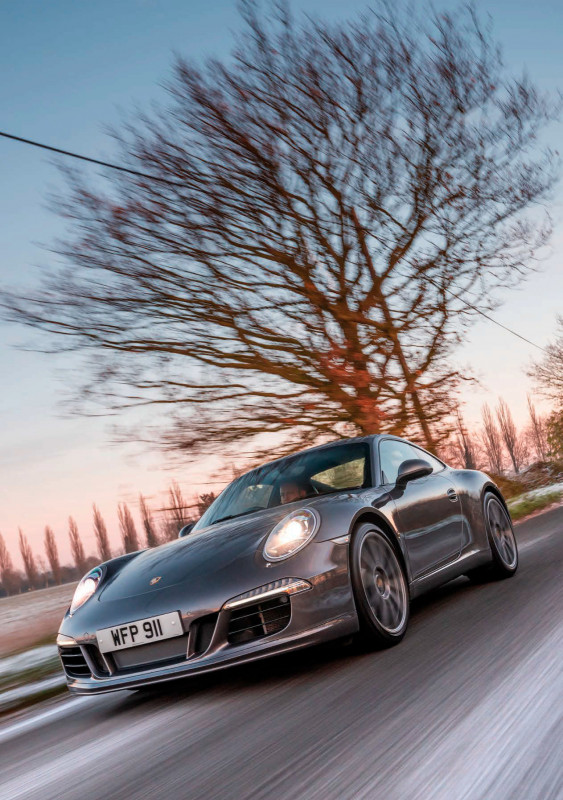
The current positioning of the GTS models as sporty all-rounders began with the 928 GTS. As the final development stage of this iconic transaxle model series, the GTS-badged ‘land shark’ featured wider rear wings, a 911-aping rear reflector strip, a wing painted in the body colour, ‘teardrop’ door mirrors and seventeen-inch Cup rims as standard. The model’s 5.4-litre V8 developed a useful 345bhp.
In 2007, the GTS badge was resurrected for the Cayenne, but two years later, found its rightful place on the rump of the 997. This was more than a run-out special, though. Think of it as a rather more affordable 997 Sport Classic, because that’s pretty much what the GTS was based on, sharing the Sport Classic’s use of the Carrera 4S wide bodyshell. Along with 402bhp, the GTS featured centre-lock wheels as standard, as well as lowering and aerodynamic enhancements. Additional exterior components accentuated in black remain a distinctive feature of GTS derivatives to this day.
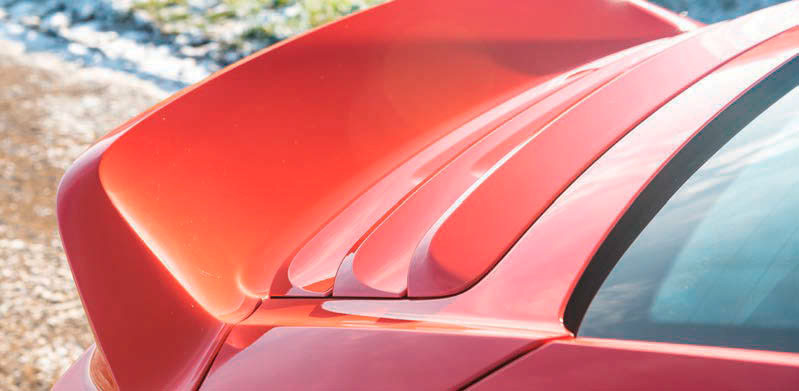
The 997 GTS also got the Powerkit option engine and the Sport Classic’s suspension. And this is arguably the most crucial point — the 997 Sport Classic had a chassis sublime in all areas, particularly evident on UK roads. Indeed, for what it’s worth, this writer rates the Sport Classic as the very best handling 997, bar none. Little wonder, then, 997 GTS residuals are top dollar, while the model’s reputation has transferred seamlessly to the 991-generation 911 and beyond.
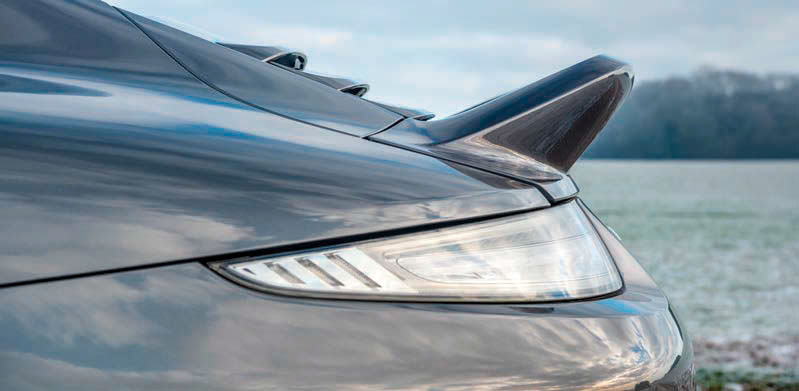
Part of the 911 GTS’s appeal is simply a matter of bang for buck. For yer basic £91,000, you got the Powerkit option and its 424bhp, almost thirty horses up on the Carrera S. True, the Powerkit was available for both models, but optioning it would take the price of the Carrera S to that of the GTS, so why would you? And let’s not forget, the GTS also has the twenty-millimetre wider body from the Carrera 4S, Porsche Active Suspension Management (PASM) with bespoke suspension settings, Porsche Torque Vectoring (PTV), Sport Chrono, active engine mounts, centre-lock wheels and various cosmetic addenda, including hardback sports seats and lots of touchy, feelie Alcantara. Charlie’s GTS even features a ducktail. Add all this to the Carrera S and watch the Porsche configurator spin into a frenzy, before spitting out a figure well over £100,000. Again, no wonder GTS prices remain super-strong.
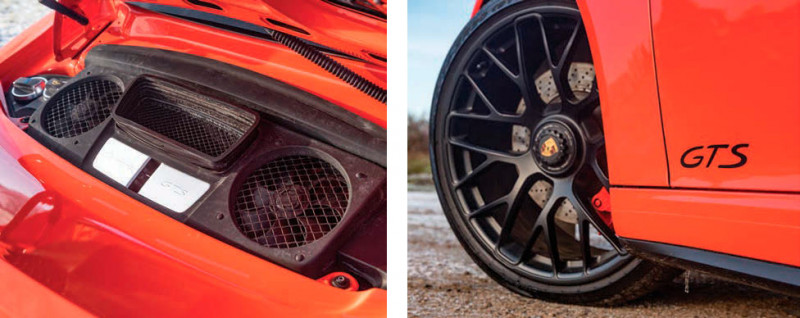
Back to the plot and our alsoducktailed Agate Grey Carrera S, not to mention the not-so-small matter of £30,000, which will go a long way in these tough times. As a 2012 build, this particular Porsche pre-dates the arrival of the 991 GTS. And, as is so often the way, faced with no upward model chain, the original buyer hit the options list hard. Granted, this 911 is twenty millimetres slimmer than the GTS and there’s no Powerkit flat-six at the rear, but nobody much moaned about the standard 395bhp. PASM and Sport Chrono is a given, as are dynamic engine mounts and the switchable exhaust. This 911 even has the factory aero kit, promoting the GTS look. Inside, we’re treated to crested leather, plus sixteen-way, heated, adjustable Sports seats. They grey paintwork is ideal for those who like their Porsches to operate under the radar.

Like the GTS on our twin test, this Carrera S makes use of PDK transmission, not that a seven-speed manual would have been an option on an early 991, or one that you could get hold of for some time following model launch. Besides, the seven-speed unit isn’t one of Porsche’s finest gearboxes. It is very easy to get lost, particularly on downshift, when the spring-loading on the lever wants to skip seventh-to- sixth and drag you to fourth. More driving observations in due course, because at this stage, it’s worth just a small interlude, reflecting where the 991 fits in today’s Porsche landscape and, importantly, how it fits historically.
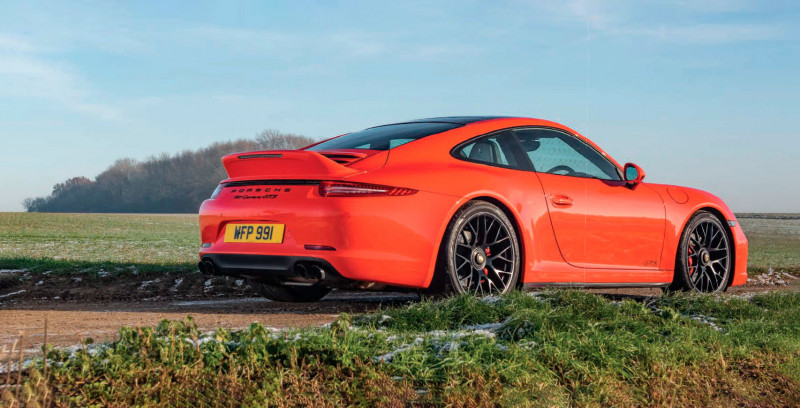
The 991 is the third ground-up redevelopment of the 911 in the icon’s sixty-year history (cue much celebration in 2023). As ever with the 911, we’re talking evolution over revolution, although it could be said the 996 was as close to revolution as the 911 has ever come — Porsche turned air into water and introduced the sort of technology likely considered science fiction to engineers in Zuffenhausen back in 1963.
THE 991 RETAINS THE CLASSIC REARBIASED WEIGHT DISTRIBUTION, BUT GREATLY REDUCES THE INERTIA EFFECT OF THE ENGINE ON HANDLING
Before long, with successive generations of water-cooled 911, PDK arrived for the masses, as did PASM, Porsche Dynamic Chassis Control (PDCC) and even those aforementioned active suspension mounts, which were designed to stop the rear-mounted engine from getting too jiggy.
GOOD MEASURE
In fact, Porsche engineers appear to have been on a sixty-year mission to tame the flat-six’s dynamic, pendulous influence. With the 991, while not eliminating it as such, the effect was certainly far less pronounced. This is largely due to the 991’s increased size, both in terms of width and, more crucially, it’s wheelbase, which is 100mm up on the 997.
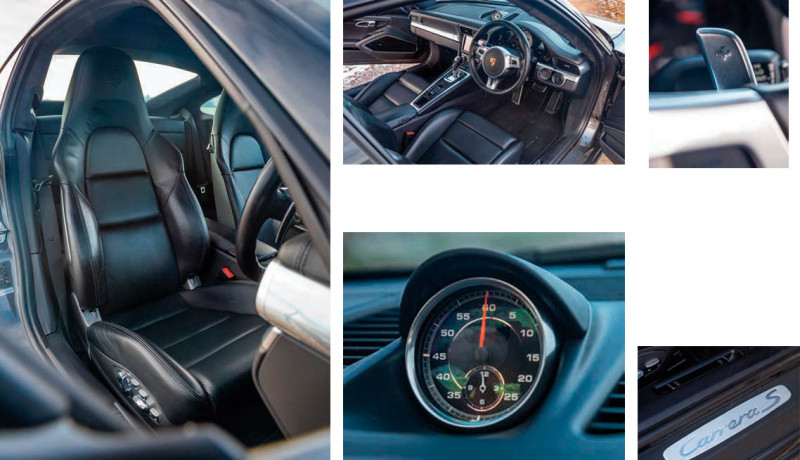
The 991 has a distinct feel to it, and it’s all down to that longer wheelbase. It’s the reason this generation of 911 is more stable, the reason rear-end twist has been virtually banished, the reason turn-in is more positive and the reason the 991 feels more like a mid-engined car. It’s important to note, the 100mm is split in such a way the 991’s rear axle line is moved 70mm aft relative to the engine, reducing the leverage of the unit’s mass, while the front axle has moved forward by 30mm. All this means the 991 retains the classic rear-biased weight distribution, but greatly reduces the inertia effect of the engine on handling. It’s not all down to handling harmony, though — the increase in wheelbase is as much to do with improving interior space as anything.
Remember how the 991 was criticised at launch for being a little less immersive at low speeds, only coming alive when the going got antisocially quick? Well, the extended wheelbase is the reason. Fair criticism? We shall see.
Of course, the other massive moan from 911 die-hards, Porschephiles and motoring scribblers was the adoption of electric power-assisted steering (EPAS). Critics argued it ruined the 911’s traditionally chatty steering feel. Well, quite apart from anything else, the extra length in the wheelbase has probably had more of an effect on dynamics.
RIGHT DIRECTION
Beyond this, Porsche’s adoption of EPAS was and is the same as any other manufacturer. Incremental fuel saving is one reason for the switch. Packaging another. The electro rack is a nicely self-contained piece of kit, with no pumps or pipes. And, perhaps, getting even closer to the truth of the matter, with the advance of start/stop technology, the power steering needs to be able to work independently of the engine. Porsche stood staunchly behind the system, but given there is no real mechanical connection between steering wheel and rack, it’s hard to equate what is happening as ‘chatty steering feel’, longer wheelbase or not. Whatever.
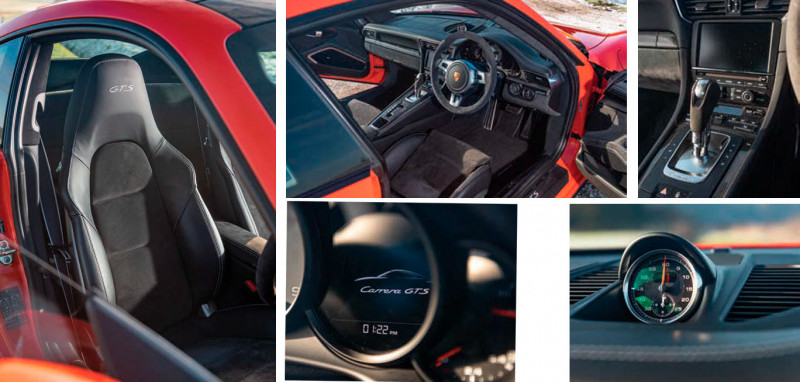
Frankly, we can forgive all of the above so-called advances over and above the 991’s (and any other modern motor) hateful electronic handbrake.
In view of what we’ve just said, it’s worth pitching in with some of our other 991 observations, many of which were in relation the base 3.4-litre Carrera. At the time of launch, it seemed odd Porsche should drop the base model down to 3.4-litres from the 997 Carrera’s 3.6-litre flat-six. Even though the smaller engine offered more power (345bhp versus 321bhp) it didn’t feel like it, largely because the gear ratios had gone intergalactic, and the torque curve was peakier as a result of the capacity drop.
As such, the engine had to be worked very hard. Put it this way, a 3.4-litre 996 Carrera didn’t have any trouble keeping up in a 911 & Porsche World group test some of you may remember from 2012. For once, the base Carrera wasn’t the purist’s choice.
The 991’s lack of firepower would be turned on its head when the twin-turbocharged, three-litre range of Carreras landed in 2016. All of a sudden, the 911 became almost bloated with power, giving Porsche purists something else to wang on about. The 3.4-litre or 3.8-litre first-generation 991 was immediately crowned legend as the last of the normally aspirated Carreras. What goes around comes around.
Anyway, enough rambling recall and back to the plot. After a number of years since this scribe last drove a 991 of any description, this is going to be interesting, for sure. A chance to reevaluate, even? And let’s not forget these 991s fall into the aforementioned ‘last of the normally aspirated 911s’ legendary status. And then there’s that £30,000 to divvy up and quantify.
Let’s start in the sixteen-way adjustable, heated cheap seats. Better switch them on too because it’s the middle of winter and bloomin’ cold. Although, having said this — and I’m going to spoil the magic here — I drove these two machines a few days after our photographs were taken, when it didn’t get above -3°C all day. I highlight this because driving either 991 hard in such conditions would have been foolhardy. If you can trade a little bit of the intimacy of the older 911 cockpits, then the 991 is a huge step forward, with a low driving position allowing you to relax, and with the steering wheel brought out to the perfect point for fast driving. Half the job of connecting with a car comes from being able to hook up with its controls, and the 991 gets things right. Perfectly so.
Cold it might have been when getting the Polaroids, but today, it’s damp, greasy and tree mulch slippy on Suffolk’s B-roads. Not that the Carrera S seems to notice. It’s almost other worldly in its ability to cover ground and find grip, scything through the PDK box with the shifts set to Sport, while keeping the damping in standard mode — the perfect combination for fast UK driving. The grip the 991 generates, particularly over the front axle, is something quite alien to any of its 911 predecessors.
This is where the 991’s new-found chassis balance really makes itself felt and where a 997 or 996 would be struggling as the rear-end weight takes over robbing the front end of bite. Sure, the 991 doesn’t move around like an earlier water-cooled 911, but blimey, it’s planted. Gripes? It’s too big, but then show me a car which isn’t these days. Besides, the 991 is far sleeker than a 992. I do kind of miss the movement and the rear end swagger, but you can’t argue with the dynamic progress, even if Porsche does seem to be in a constant and existential engineering battle with itself, one that it has actually won with the 911 RSR endurance racers, by giving in and going mid-engined. Presumably as a race car, layout doesn’t count?!
And when you don’t want to be fully on it, set the controls to GT mode and just let the 991 do its 911 thing of being a perfectly passive everyday GT machine. Oh, of course, there’s Sport Plus mode for a pseudo GT3 vibe. And all this for Charlie’s £55,595 asking price. Make no mistake, you’re getting a very well equipped 911 for that sum.
Can the GTS really be worth £30,000 more? Not objectively, no. Is it night and day different on the road when compared to the Carrera S? Again, no. How can be? Can you even notice the difference between 395bhp and 430bhp on the public highway? Not really. Certainly not when each car’s torque figures are near identical (324lb-ft at 5,600rpm versus 324lb-ft at 5,750rpm). Torque is, after all, what hits you in the real world.
BEYOND COMPARE
Inside, the GTS is perhaps a sportier place to be, particularly if you like that whole Alcantara thing. And to drive? Again, it’s more of the same — like the Carrera S, the GTS is capable of deploying massive speed in conditions less than favourable. There’s a tad more width at the rear for extra stability. Does the PTV assist turn in? It’s subtle, and I’m sure it’s there, but the back-end doesn’t feel like it is suddenly on castors. The unique GTS PASM sport suspension? I’d give that as marginally stiffer over the S, but you know, it’s kind of splitting hairs. Orange or grey? That’s purely a personal thing, so not worth commenting on.
As a future investment, then. Money well spent? A trickier conundrum, for sure. Clearly, the GTS is the more desirable machine. The market says so. This GTS is going to hold its value, and with 10,000 miles on the clock, you could add a further five thousand a year without greatly impacting the car’s net worth. In other words, it needn’t be a prisoner of its mileage, unlike some other high-spec Porsches. And, as a model pitched between the Carrera S and GT3, the GTS makes a lot of sense, given how the cheapest 991 GT3 is a good fifteen grand dearer, and most are well north of the £100k barrier.
And yet, here’s the thing: let’s be glad of the choice. One man’s Lava Orange GTS is another man’s Agate Grey Carrera S. The £30,000 difference has either been wisely spent or cleverly saved, depending on which way you squint at it. A cop out? Nah, just a reflection of the broad state of the Porsche market, which we should be ever thankful for. And finally, a personal epiphany for the 991? Yes, I think so.
No, it doesn’t quite wear its heart on its sleeve like previous 911s, but that’s the thing with progress — it tends to knock off the rough edges. Sitting on the fence, I’d be very happy with either of these cars. Stepping off the fence, I might be happier still with an extra thirty grand in my pocket. There, I’ve said it. All you need to do is head down to William Francis and decide for yourself.
Above Which of our 991 duo would you be taking home? Give William Francis a call and make it happen!
Above Full leather with embossed Porsche crests feels positive luxurious after being in the GTS Below Aerokit pays tribute to the iconic Carrera RS 2.7.
Above Agate Grey helps this Carrera S fly under the radar Below No centrelocks for the less expensive 991.
Above Lashings of Alcantara is typical of GTS trim, though owners wanting a less motorsport oriented vibe could specify full leather Below Both the 991s in our twin test are blessed with the factory Aerokit, including ducktail.
Above First-gen GTS is a superbly equipped 991 and is arguably the sweet spot of the range, but is its stiff value worth shelling out for over a same-age Carrera S? Below Centre-lock wheels are a clear nod to GT influence, though the jury’s out on whether the icicle was a factory extra
Above With the resurrection of the GTS badge, Porsche created a perfect halfway house between the GT3 and Carrera S Below Porsche hasn’t exactly made it easy for 991 owners to work on the engine


